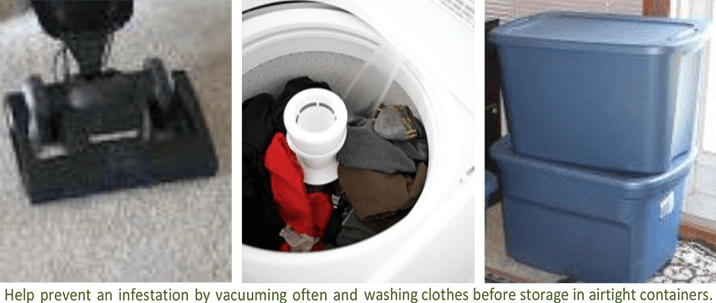Identification and Life Cycle
There are two species of clothes moths that commonly infest homes; The casemaking clothes moth (Tinea pellionella), and the webbing clothes moth (Tineola bisselliella). Clothes moths are sometimes mistaken for Indian meal moths, which are known to be a pest of pantry items such as cereal products, nuts and herbs, not cloth.
The Webbing clothes moth is a light golden color, black eyes and a coppery tuft of hairs on the top of its head. It has a wing span of approximately 1/2 – inch and is a poor flyer that rarely leaves dark closets or other storage areas.
The Casemaking clothes moth, is similar in size to the webbing clothes moth, with the exception of dark specs on the wings and a slightly darker shade of color.
Males actively seek out female moths in order to mate and can surprisingly both find their way through narrow cracks in storage cabinets, boxes, bins, etc. Once they mate, the female searches for a suitable food source to lay her eggs.
Female moths will lay their eggs in clothing, furniture or other items that are made from animal-based materials. A single female can lay up to 57 small, pinhead-sized , white eggs on or near the fabric, clothing or furniture they infest. The eggs will hatch in one to three weeks during the summer months. Once hatched, it is the larvae which feeds, not the adults. Clothes moths go through four stages; egg, larva, pupa and adult




Comments are closed.